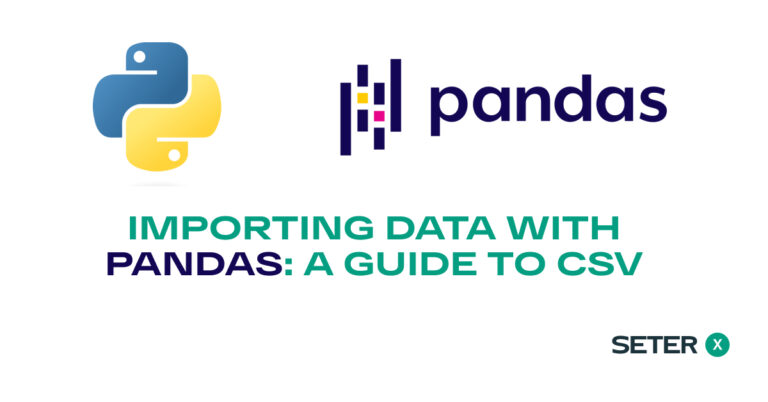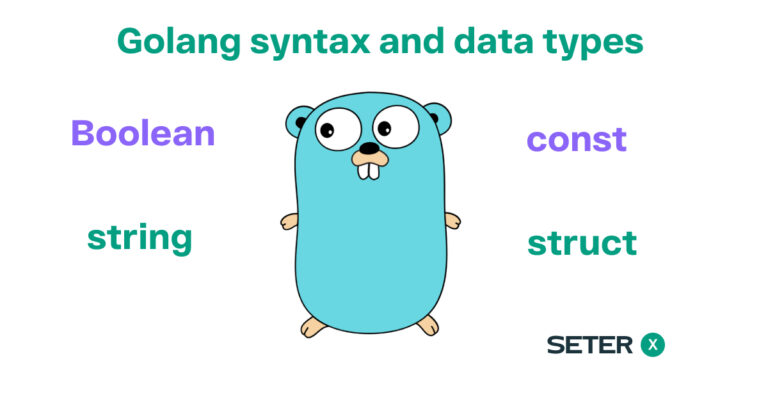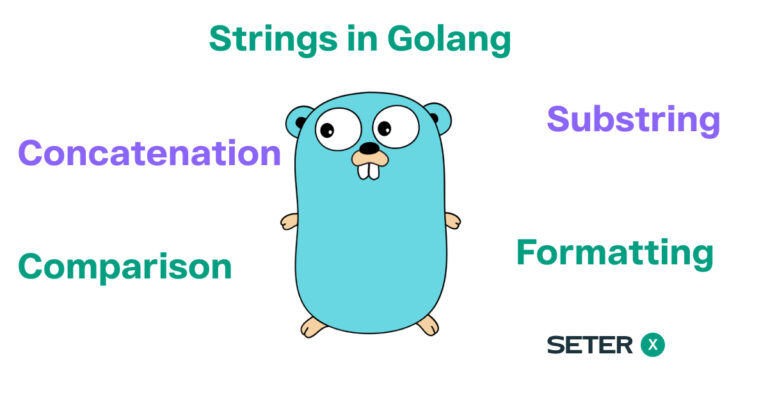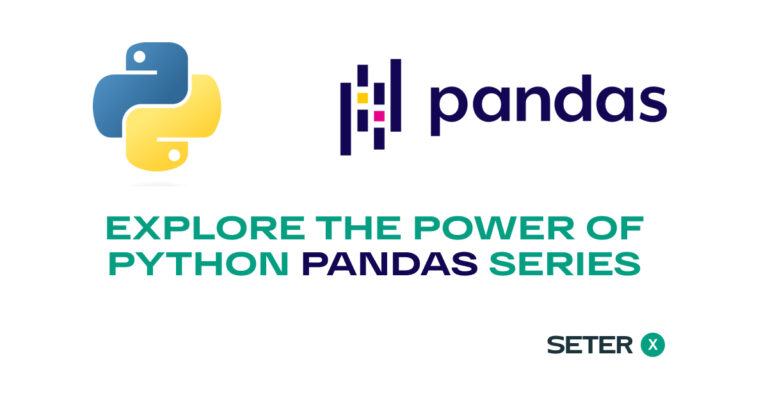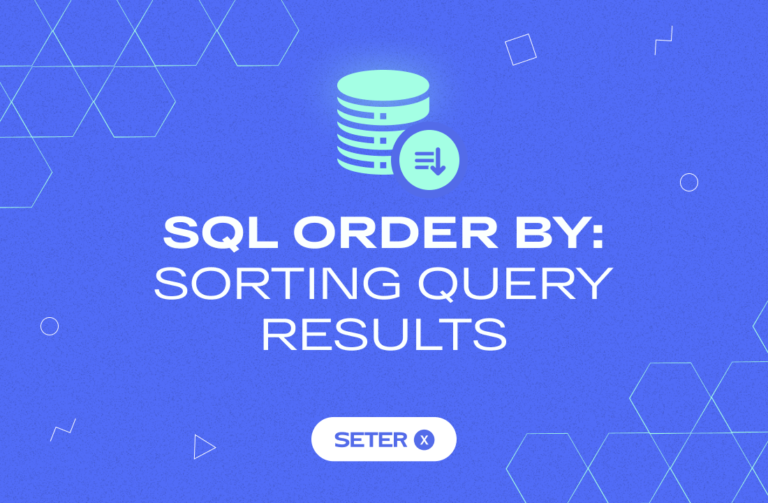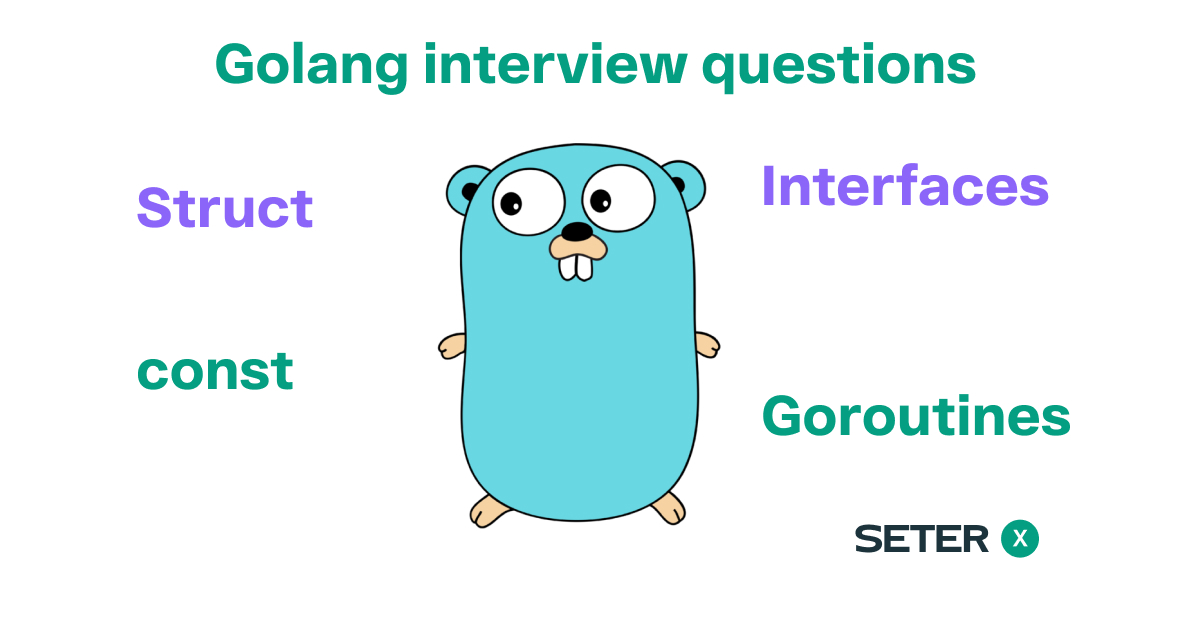
Golang, also known as Go, is an open-source programming language that is gaining significant popularity in recent years. Created by Robert Griesemer, Rob Pike, and Ken Thompson, the Go programming language has been embraced by developers for its simplicity, efficiency, and concurrency features. If you’re preparing for a job interview related to Go programming, here are golang questions that you may encounter.
Beginner level
What are the key features of the Go programming language?
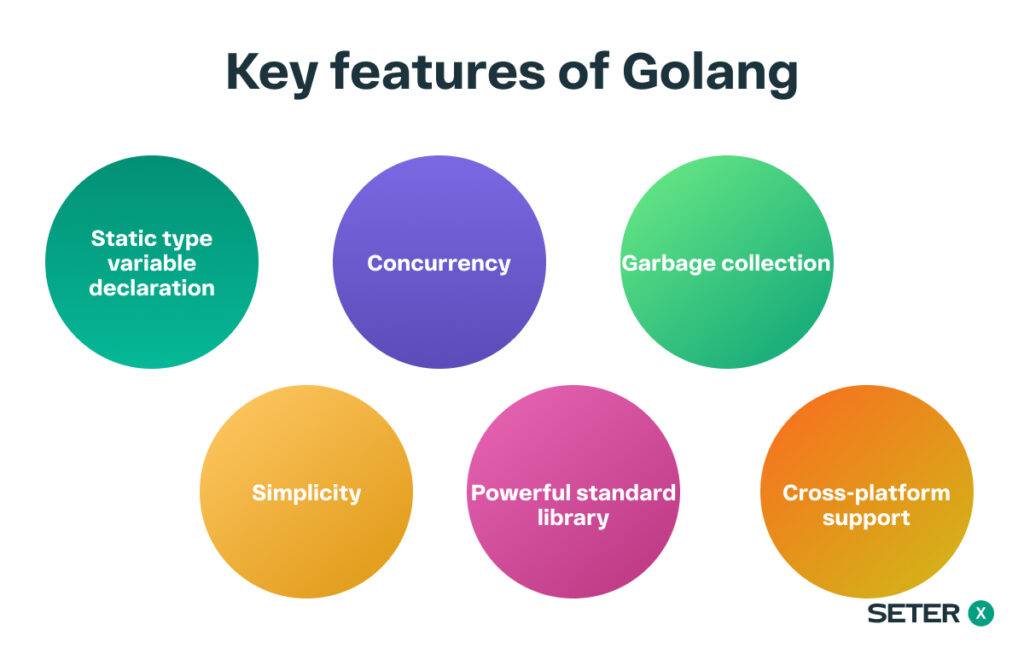
Go is an open-source programming language that has several key features that make it a popular choice among developers:
- Static type variable declaration: Go is a statically typed language, meaning that the variable types are determined at compile time. This helps catch type-related errors early, making the code more reliable.
- Concurrency: Go has built-in support for concurrent programming using goroutines and channels, making it easier to write high-performance, concurrent code.
- Garbage collection: Go automatically manages memory allocation and deallocation, reducing the risk of memory leaks.
- Simplicity: Go’s syntax is simple and straightforward, making it easier to read and maintain.
- Powerful standard library: Go has a rich standard library that provides a wide range of functionality out of the box.
- Cross-platform support: Go is a cross-platform language, meaning that code written in Go can be compiled to run on a wide range of platforms, including Windows, Linux, macOS, and more. This makes it easier to develop and deploy applications on multiple platforms.
What is the difference between actual variable declaration and dynamic type variable declaration?
In Go, there are two ways to declare variables: actual variable declaration and dynamic type variable declaration.
Actual variable declaration involves explicitly specifying the variable type during declaration. For example:
var x int = 10In this case, we are declaring a variable x of type int with the initial value of 10.
Dynamic type variable declaration, on the other hand, relies on type inference. The variable type is inferred based on the value assigned to the variable. For example:
x := 10Here, the variable x is automatically inferred to be of type int based on the assigned value. This form of declaration is more concise and is often used for brevity.
How can you return multiple values from a function in Go?
Go allows functions to return multiple values. This can be achieved by specifying the return types inside parentheses in the function signature, and using multiple return statements in the function body. For example:
func swap(x, y int) (int, int) {
return y, x
}In this example, the swap function takes two int arguments and returns two int values. The function swaps the input values and returns them in reverse order.
How do you declare and use pointers in Go?
Pointers in Go are similar to pointers in other programming languages like C and C++. A pointer variable stores the memory address of another variable. To declare a pointer variable, you use the * symbol followed by the variable type. For example:
var x int = 10
var p *intIn this example, we declare an int variable x and a pointer variable p of type *int. To assign the address of x to the pointer p, we use the & operator:
p = &xTo access the value stored at the memory address held by the pointer, we use the * operator:
fmt.Println(*p) // Output: 10What are the differences between raw string literals and interpreted string literals in Go?
String literals in Go can be of two types: raw string literals and interpreted string literals.
Raw string literals are enclosed in backticks (` `) and represent the text between the backticks exactly as it appears, without any escape sequences or interpolation. For example:
s := `This is a raw string literal
with new lines and t tabs preserved.`In this example, the raw string literal preserves the newline and tab characters as plain text.
Interpreted string literals, on the other hand, are enclosed in double quotes (“) and support escape sequences, such as n for newline and t for tab characters. For example:
s := "This is an interpreted string literalnwith new lines and t tabs."In this example, the interpreted string literal translates the escape sequences into their corresponding characters, resulting in a newline character and a tab character in the output.
What is the switch statement, and how is it used in Go?
A switch statement in Go is a conditional control structure that allows you to execute different blocks of code based on the value of an expression. The switch statement is a more concise and readable alternative to a series of nested if-else statements. Here’s a simple example:
func main() {
x := 3
switch x {
case 1:
fmt.Println("x is 1")
case 2:
fmt.Println("x is 2")
case 3:
fmt.Println("x is 3")
default:
fmt.Println("x is not 1, 2, or 3")
}
}In this example, the switch statement evaluates the value of the variable x and executes the corresponding case block. Since the value of x is 3, the program will output “x is 3”. If no matching case is found, the default block is executed.
How do you handle errors in Go?
Error handling in Go is done using the built-in error type. Functions that may encounter errors typically return an additional error value alongside their regular return value. If the error is nil, it indicates that the operation was successful; otherwise, the error value contains information about the error.
Here’s an example of a function that returns an error:
func divide(a, b float64) (float64, error) {
if b == 0 {
return 0, errors.New("division by zero is not allowed")
}
return a / b, nil
}To handle the error returned by the divide function, you can use the following pattern:
result, err := divide(10, 0)
if err != nil {
fmt.Println("Error:", err)
} else {
fmt.Println("Result:", result)
}In this example, the divide function is called with arguments that would cause a division by zero error. The error is then checked and printed if it’s not nil.
Intermidiate level
How do you define and use interfaces in Go?
Interfaces in Go are a way to define a set of method signatures that a type must implement. They provide a way to achieve polymorphism and decouple code by specifying the behavior of a type without depending on its concrete implementation. To define an interface, you use the interface keyword followed by a set of method signatures enclosed in curly braces.
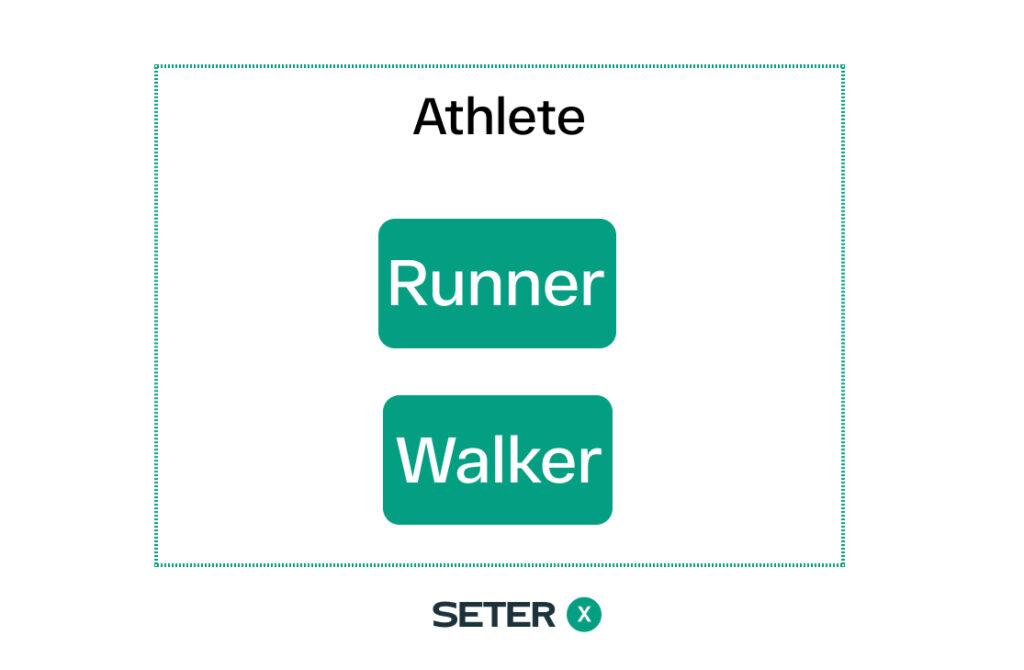
Here’s an example of defining an interface:
type Shape interface {
Area() float64
Perimeter() float64
}In this example, we define a Shape interface with two methods: Area and Perimeter. Any type that implements these methods can be considered as implementing the Shape interface. To implement an interface, a type simply needs to define all the methods specified in the interface. Here’s an example of a Rectangle type implementing the Shape interface:
type Rectangle struct {
Length, Width float64
}
func (r Rectangle) Area() float64 {
return r.Length * r.Width
}
func (r Rectangle) Perimeter() float64 {
return 2 * (r.Length + r.Width)
}In this example, we define a Rectangle struct with Length and Width fields, and then implement the Area and Perimeter methods with the appropriate calculations. By implementing these methods, the Rectangle type is now considered to implement the Shape interface.
To use an interface, you can write functions that accept interface values as arguments. This allows you to write more generic functions that can work with any type that implements the given interface. For example:
func printShapeInfo(s Shape) {
fmt.Printf("Area: %.2f, Perimeter: %.2fn", s.Area(), s.Perimeter())
}
func main() {
r := Rectangle{Length: 5, Width: 3}
printShapeInfo(r)
}In this example, the printShapeInfo function accepts a Shape interface value as an argument and prints the area and perimeter of the shape. Since the Rectangle type implements the Shape interface, we can pass a Rectangle value to the printShapeInfo function.
How do you work with pointers in Go?
Pointers in Go are variables that store the memory address of another variable. Pointers allow you to directly manipulate the value stored in the memory address they point to, which can be useful for efficient memory usage or modifying values in other functions.
To declare a pointer variable, you use the operator followed by the variable type. For example, to declare a pointer to an int, you would use int. To get the memory address of a variable, you use the & operator. To access or modify the value stored in the memory address pointed to by a pointer, you use the * operator again.
Here’s an example of working with pointers in Go:
func main() {
x := 42
fmt.Println("x:", x)
p := &x // Get the memory address of x and store it in the pointer p
fmt.Println("p (memory address of x):", p)
*p = 84 // Use the pointer to modify the value stored in the memory address
fmt.Println("x (after modification):", x)
}In this example, we declare a variable x and initialize it with the value 42. We then create a pointer p by getting the memory address of x using the & operator. We use the pointer p to modify the value stored in the memory address by assigning a new value using the * operator. The value of x is now 84.
Pointers can also be used as function parameters to modify the values of variables passed to the function. Here’s an example of using pointers in a function:
func doubleValue(x *int) {
*x *= 2
}
func main() {
value := 10
fmt.Println("Value before doubling:", value)
doubleValue(&value)
fmt.Println("Value after doubling:", value)
}In this example, we have a function doubleValue that takes a pointer to an int as a parameter. The function modifies the value stored in the memory address pointed to by the pointer by doubling it. In the main function, we declare a variable value and initialize it with 10. We then call the doubleValue function, passing the memory address of value using the & operator. After the function call, the value of value is doubled to 20.
Pointers in Go provide a way to directly access and manipulate memory addresses, enabling efficient memory usage and the ability to modify values in other functions. However, using pointers can lead to potential issues, such as uninitialized or null pointers, and should be used with caution.
How do you use the GOPATH environment variable in Go?
The GOPATH environment variable in Go is used to define the workspace directory where your Go projects and dependencies are stored. It is typically set to a single directory, but it can also be a list of directories separated by a colon (on Unix systems) or a semicolon (on Windows systems).
The GOPATH is used by the Go tools to locate and manage packages, binaries, and source code. The workspace directory should have the following structure:
GOPATH/
bin/
pkg/
src/The bin directory contains compiled executable commands.
The pkg directory contains compiled package objects.
The src directory contains the source code organized by package paths.
When importing packages in your Go code, the GOPATH helps the Go tools to locate the package source code. For example, when using the import statement:
import (
"fmt"
"github.com/user/project/package"
)In this case, the Go tools will look for the github.com/user/project/package directory under the src directory of your GOPATH.
How do you import packages and use functions from other packages in Go?
To use functions or types from other packages in your Go code, you need to import the packages using the import keyword. The import statement is placed at the beginning of the Go source file, right after the package declaration. You can import a single package or multiple packages in a single import statement.
Here’s an example of importing the fmt package and using the Println function:
package main
import "fmt"
func main() {
fmt.Println("Hello, World!")
}In this example, we import the fmt package and call the Println function to print “Hello, World!” to the console.
For packages that are not part of the standard library, you need to use the full package path when importing. The package path usually consists of the domain name, followed by the username and the project or repository name. For example:
import (
"fmt"
"github.com/user/project/package"
)In this example, we import a package from an external repository hosted on GitHub. Once the package is imported, you can use the exported functions, types, and variables from that package in your code. Exported identifiers in Go start with an uppercase letter, while unexported identifiers start with a lowercase letter.
How do you define and use methods in Go?
In Go, methods are functions that have a receiver. A method receiver is a value or a pointer of a specific type on which the method is defined. The receiver is defined before the method name and appears between the func keyword and the method name. Here’s an example of defining a method on a Rectangle struct:
type Rectangle struct {
Length, Width float64
}
func (r Rectangle) Area() float64 {
return r.Length * r.Width
}In this example, we define an Area method on the Rectangle type. The method receiver r is of type Rectangle.
To call a method on a value or a pointer of the receiver type, you use the dot notation, like this:
rect := Rectangle{Length: 5, Width: 3}
area := rect.Area()
fmt.Println("Area:", area)In this example, we create a Rectangle value and call the Area method on it to calculate and print the area.
Does Go support method overloading?
No, Go does not support method overloading. In Go, each method must have a unique name within its receiver type. However, you can achieve similar functionality by using interfaces and embedding.
Interfaces allow you to define a set of method signatures that can be implemented by multiple types. When a function takes an interface value as an argument, it can accept any type that implements the required methods, providing a form of polymorphism that can replace the need for method overloading.
Embedding allows you to include one struct type within another, effectively “inheriting” the embedded type’s methods. This can be useful for extending or modifying the behavior of existing types without the need for method overloading.
How does Go handle type conversion?
In Go, type conversion is explicit and must be done using a type conversion expression. To convert a value from one type to another, you use the target type enclosed in parentheses followed by the value to be converted. For example:
var x int = 10
var y float64 = float64(x)In this example, we convert an int value to a float64 value using a type conversion expression.
It’s important to note that not all types can be converted to other types. For example, you cannot directly convert a string value to an int value or vice versa. In such cases, you need to use functions from the standard library, such as strconv.Atoi and strconv.Itoa, to perform the conversion.
How do you use Goroutines and Channels to handle concurrency in Go?
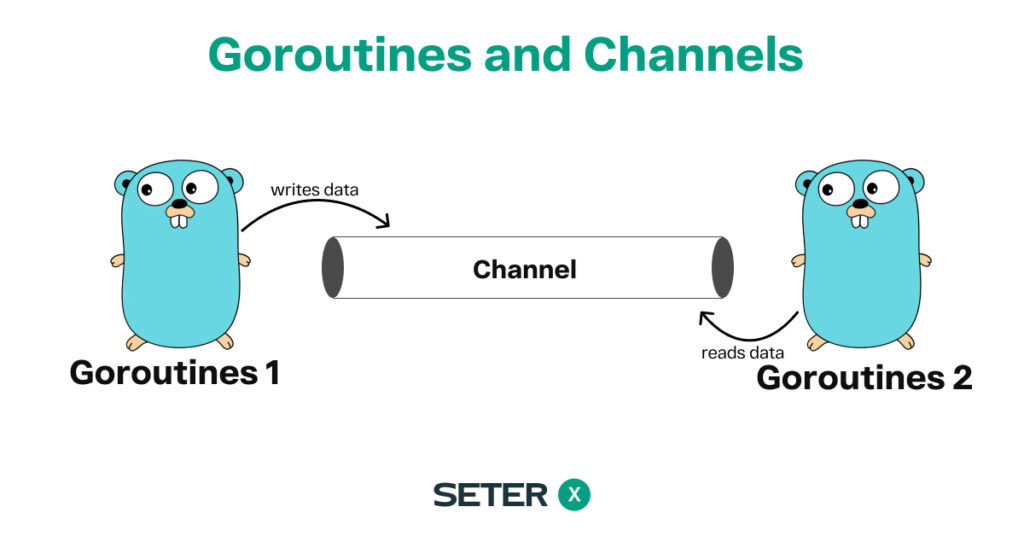
Goroutines are lightweight threads managed by the Go runtime, allowing you to run multiple concurrent tasks. To create a Goroutine, you use the go keyword followed by a function call. For example:
func printNumbers() {
for i := 1; i <= 10; i++ {
fmt.Println(i)
}
}
func main() {
go printNumbers()
time.Sleep(time.Second * 2)
}In this example, we create a Goroutine that runs the printNumbers function concurrently with the main function. The time.Sleep call in the main function is used to give the printNumbers Goroutine enough time to complete before the program exits.
Channels are a synchronization mechanism in Go that allows Goroutines to communicate and share data. Channels are created using the make function with the chan keyword followed by the channel’s element type. To send a value to a channel, you use the <- operator, and to receive a value from a channel, you use the <- operator as well.
Here’s an example of using Goroutines and channels to calculate the sum of an array of integers concurrently:
func sum(arr []int, c chan int) {
total := 0
for _, v := range arr {
total += v
}
c <- total
}
func main() {
arr := []int{1, 2, 3, 4, 5, 6, 7, 8, 9, 10}
c := make(chan int)
go sum(arr[:len(arr)/2], c)
go sum(arr[len(arr)/2:], c)
x, y := <-c, <-c
fmt.Println("Sum:", x + y)
}In this example, we create a channel c and two Goroutines that run the sum function on different halves of the array. The results are sent to the channel, and the main function receives and adds them together.
How do you define and use anonymous functions in Go?
Anonymous functions, also known as function literals or closures, are functions without a name. They can be used as function arguments, assigned to variables, or returned from other functions.
To define an anonymous function in Go, you use the func keyword followed by the function parameters and body, without providing a name for the function. Here’s an example of an anonymous function assigned to a variable:
square := func(x int) int {
return x * x
}
fmt.Println("Square of 5:", square(5))In this example, we define an anonymous function that calculates the square of a number and assign it to the square variable. We then call the function using the variable and pass an argument to it.
Anonymous functions can also be used to create closures, which are functions that capture and have access to variables from the enclosing scope. Here’s an example of a closure:
func counter() func() int {
count := 0
return func() int {
count++
return count
}
}
func main() {
count := counter()
fmt.Println("Count:", count())
fmt.Println("Count:", count())
}In this example, the counter function returns an anonymous function that increments and returns the value of the count variable. The returned function is a closure because it captures and has access to the count variable from the enclosing scope.
Advanced
How do you handle signals in Go?
In Go, signals can be handled using the os/signal package, which provides the ability to intercept and respond to various types of signals sent to your program. Signals are events that can be sent to a running process by the operating system or other programs to inform it of various events, such as termination requests or changes in the environment.
To handle signals in Go, you can use the signal.Notify function, which takes a channel and a list of signals to listen for. When a specified signal is received, it will be sent to the provided channel. You can then use a Goroutine to monitor the channel for incoming signals and perform appropriate actions.
Here’s an example of handling the os.Interrupt signal, which is sent when the user presses Ctrl+C:
package main
import (
"fmt"
"os"
"os/signal"
"syscall"
)
func main() {
signalChannel := make(chan os.Signal, 1)
signal.Notify(signalChannel, os.Interrupt, syscall.SIGTERM)
go func() {
sig := <-signalChannel
fmt.Printf("nReceived signal: %s. Exiting...n", sig)
os.Exit(1)
}()
fmt.Println("Press Ctrl+C to exit...")
for {
// Simulating a long-running process
time.Sleep(time.Second * 1)
}
}In this example, we create a signalChannel and register it with the signal.Notify function to listen for os.Interrupt and syscall.SIGTERM signals. We then create a Goroutine that waits for a signal to be received on the channel and performs the necessary actions, such as printing a message and exiting the program.
By handling signals, you can gracefully shut down your program or perform other actions in response to external events.
How do you implement custom error types in Go, and what are the benefits of doing so?
To implement custom error types in Go, you can define a new struct that implements the error interface by providing an Error() string method. Custom error types are beneficial because they allow you to add more context and metadata to your errors, making it easier to diagnose and handle them appropriately.
Here’s an example of a custom error type:
type CustomError struct {
Code int
Message string
}
func (e CustomError) Error() string {
return fmt.Sprintf("Error code %d: %s", e.Code, e.Message)
}
func someFunction() error {
// ...
return CustomError{Code: 404, Message: "Not found"}
}
func main() {
err := someFunction()
if err != nil {
fmt.Println(err)
}
}In this example, the CustomError struct includes a Code field and a Message field, allowing you to provide more context about the error. When the Error() method is called, it formats the error message using the provided code and message.
Explain the differences between buffered and unbuffered channels in Go, and provide examples of when you would choose one over the other.
In Go, channels can be either buffered or unbuffered. Unbuffered channels have no capacity and require both the sender and receiver to be ready to perform the send and receive operations. This means that unbuffered channels provide synchronization between goroutines, ensuring that one goroutine waits for another to be ready before proceeding.
Buffered channels, on the other hand, have a specified capacity, allowing them to store a certain number of values before blocking. This means that a sender can send values to a buffered channel up to its capacity without waiting for a receiver, and a receiver can receive values from a buffered channel up to its capacity without waiting for a sender.
You would typically choose an unbuffered channel when you want to synchronize goroutines, ensuring that one waits for the other to be ready before proceeding. Buffered channels are useful when you want to allow some level of concurrency between sender and receiver goroutines, or when you want to prevent blocking due to slow consumers.
Here’s an example of an unbuffered channel:
ch := make(chan int)
go func() {
ch <- 42
}()
fmt.Println(<-ch)In this example, the sender goroutine sends the value 42 to the unbuffered channel ch. The main goroutine receives the value from the channel and prints it. The sender goroutine will block until the main goroutine is ready to receive the value.
Here’s an example of a buffered channel:
ch := make(chan int, 2)
go func() {
ch <- 42
ch <- 43
}()
fmt.Println(<-ch)
fmt.Println(<-ch)In this example, the sender goroutine sends two values to the buffered channel ch, which has a capacity of 2. Since the channel has sufficient capacity, the sender goroutine does not block. The main goroutine then receives the values from the channel and prints them.
Conclusion
Preparing for a technical interview can be a daunting task, but with dedication and practice, you can master the art of problem-solving in Go. As you prepare for your interview, make sure to familiarize yourself with the language’s core concepts, practice solving common programming problems, and gain hands-on experience working on projects using Go.
We wish you the best of luck in your upcoming interviews, and we hope that the knowledge you’ve gained from this blog post will help you shine in your discussions with interviewers. Remember, perseverance and a growth mindset are key to success in any endeavor, so keep honing your skills and stay confident in your abilities. Good luck!


